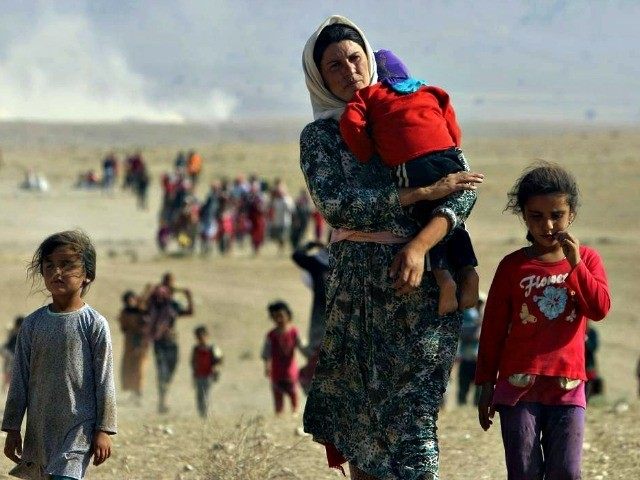Over 50 Yazidis attended a demonstration outside of the United Nations building in Erbil, Iraq, the capital of Iraqi Kurdistan, one year after the Islamic State (ISIS/ISIL) slaughtered thousands of Yazidis in Sinjar. Protesters demanded action against ISIS to help free the numerous females still held by the terrorist group.
“We demand the liberation of Yezidi women and girls who are still in captivity of the terrorist organization of ISIS,” exclaimed one protester.
Another rally took place in Sulaymaniyah, which is 124 miles southeast of Erbil. Local human rights activists joined hundreds of Yazidis to remember those lost in Sinjar.
“The international community hasn’t taken any action to protect Yezidis from IS terrorists,” one person declared.
Officials believe at least 2,000 Yazidis died in the attack. Another 50,000 escaped into the Sinjar Mountains, where they had no water and faced brutal heat and disease. Overall, though, 450,000 Yazidis left the Sinjar district, with some making homes in makeshift refugee camps in Turkey and Kurdistan.
News slowly trickled out of the refugee camps as survivors told the world what they endured during the massacre.
“We have striking evidence obtained from Yazidis fleeing Sinjar and some who escaped death, and also crime scene images that show indisputably that the gangs of the Islamic State have executed at least 500 Yazidis after seizing Sinjar,” said Mohammed Shia al-Sudani, human rights minister, adding:
Some of the victims, including women and children were buried alive in scattered mass graves in and around Sinjar. In some of the images we have obtained there are lines of dead Yazidis who have been shot in the head while the Islamic State fighters cheer and wave their weapons over the corpses. This is a vicious atrocity.
Matthew Barber, a graduate student from the University of Chicago who at the time resided in northern Iraq, tweeted out messages from Yazidis he met. The UN admitted 56 children died from dehydration on the mountain. During the massacre, reports “claimed that 67 young men were shot dead by the militants.” Terrorists kidnapped the females for sex slavery and forced marriages. ISIS drove out all the Yazidis from Sinjar:
Rudaw reporters in the region have witnessed a looming humanitarian catastrophe for Yezidi Kurds and for Assyrian and Chaldean Christians. Thousands are scattered across open plains where many have died from hunger and thirst. Twenty children have died of hunger and many elderly collapsed from exhaustion in the summer heat.
Survivors of two days’ fighting in Sihela, who described their dire situation to Rudaw TV, spoke of a life and death situation on a mountain where thousands of men, women and children spent 24 hours.
In July, Rudaw reported on Yazidi artist Ammar Salim, 31, who uses his talent “to explain about the Yazidi genocide.” He only picked up his paintbrush after he met other survivors who told their stories. They are graphic, but for the Yazidis, describing their past year against ISIS is pivotal to surviving and rebuilding their lives. There are no words, many say, to describe the torture and horrific abuse inflicted upon the small religious group.
“It was a tragic thing that happened,” he exclaimed. “I feel that tragedy, and then I paint. When I meet witnesses and they tell me their stories, and I saw that in the media there were no images like this, I decided to make these kind of paintings. To record what happened and show it to the world.”
One canvas shows “ISIS fighters killing men and chasing and raping women on Mount Shingal.” Another displays the “fighters choosing and buying women that are undressed in front of them.” He fills the paintings with symbolism, such as a “ring for lost virginity, withered trees for the changed and lost lives of Yazidi women.”

COMMENTS
Please let us know if you're having issues with commenting.